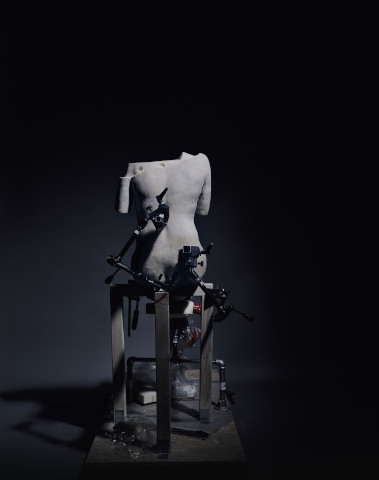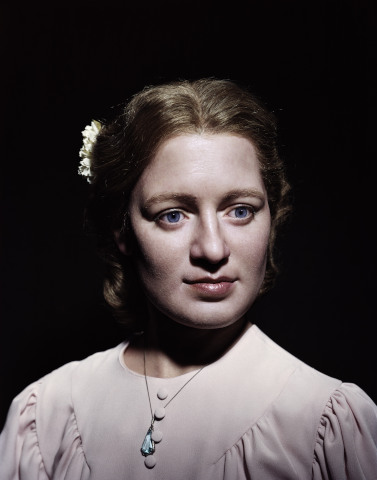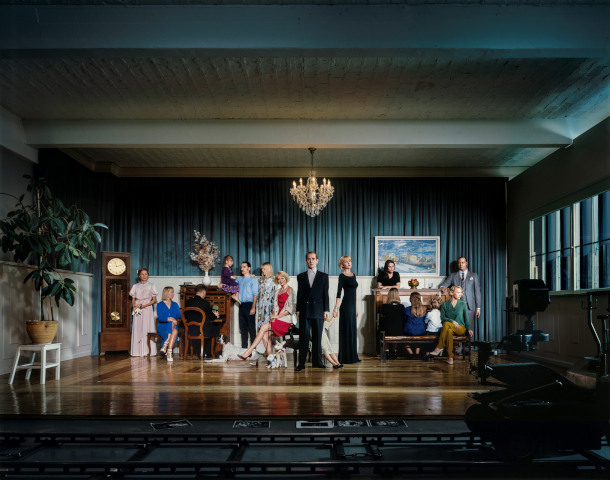Do Androids Dream of Eclectic Portraits? Andreas Mühe and his Mischpoche at Hamburger Bahnhof Museum
- Christian Hain
- May 10, 2019
- 5 min read
Updated: Mar 23, 2020
(Berlin.) Photography artist Andreas Mühe is the son of a (locally) well-known, deceased, German actor, and even if upon being confronted with the fact by a journalist from the most infamous tabloid around, he claims, his art would be no less relevant without this connection, he profits a lot, as is evidenced not least by the media interest in this show at Hamburger Bahnhof. It certainly sounds like every gallery assistant’s wildest dream coming true: “yeah, uh-hum, by the way, the artist is that actor’s son, Ulrich Mühe, you know him, sure you do...” What better start into serious negotiations?! But that tabloid’s representative at the opening press conference also had a point in a more profound sense, when asking: “Would anybody at all visit your exhibition, if you were John Doe, a baker’s boy?” (so much for stealing from BILD for today.)
This whole show centres on the artist’s family after all, and yet, and this needs to be said too, the concept exceeds the purely personal sphere, to a degree at least: What on first sight are just theatrically composed group portraits, homely family scenes around the piano, are partly fake (re-)constructions, “partly fake” in that they mingle the living with the dead, the latter appearing in the form of tremendously lifelike mannequins. Mühe himself mentions the link to ancestral portraits that once were the fashion among European noble houses (and a steady source of income for many artists). Ironically enough, his show gets funded by Volkswagen, and a company representative stresses the importance of democratic art, “the people”, "everyone", to their sponsoring strategy, further declaring: “Andreas Mühe concerns us all!” Well, yes and no, like the answer to that other question: “Are Diesels good or bad?”
Andreas Mühe isn't keen on confusing the audience, we are made aware of his concept right at the start, when plaster busts and images of half finished sculptures/dolls/“androids” grant insights into the creative process. (It almost looks like the “mass grave”/catacombs at Georg Kolbe Museum, should you remember that one.) And there’s still room enough for guesswork: Who is who, or rather “what”? Which is the image of a living being and what a sculpted image "created in the image of"? Talk about multiplication... Their identity is not revealed, merely their presence, we see dead people like we do the living (ok, that’s nothing special in photography), we’re not told who is who, who is or has been there in person, in the artist’s studio, captured in a photographic image, and who – well, who appears like he has been once, at a certain point of his life, at around the age of the artist, forty-ish, when he was captured in another photographic image, an image that later served Mühe in his “resurrection”, in having that person's likeness reconstructed. That's the only clue he's given us, all artificial non-intelligences share the same age, which eliminates the children and the dog (there do appear some rather obvious toy dogs in certain scenes). Hairstyles and dresses are kept rather neutral, timeless, not telling much – every fashion designer’s and –photographer’s nightmare come true. Isolde‘s face feels vaguely familiar, but I hardly know any German actors, and even less by name - do the Mühes still have living relatives in the industry today?
Turns out in a nice twist, you believe yourself better able to see the difference, and recognize the “fakes”, on photos you've taken of the photos in the show than in “real life”.
A little paradoxically, Mühe first recreates his family tree in reversed order, sculpturally “raises the dead”, but once the photo is taken, this puppet master doesn’t care any more for the inhabitants of his theatrum mundi, and nonchalantly orders them destroyed. He defines himself as a photographer, not a sculptor, and it almost sounds like the habit of an actor, who will easily abandon a character, a role he’s impersonated, and move on without ever looking back.
Photography's powers to stop, freeze, congeal, and hold fast (a moment in) time are a well-known fact; and collages are nothing new either. One might think Mühe’s approach redundant, trivial, unnecessary, over-complicated for complication’s sake - or happily concede, innovation lies in the conceptual. These works could be exchanged for “conventional” collages, even digitally produced, which would be much easier to do, and cheaper too - take away the modelling part and the visible result won’t change. The pseudo-collage technique, collage of and in time, only adds something intangible. We may get lost in speculation: Where lies the difference to an album, is not the whole show just this, a family album, or several, combined, a digital album, an iPhoto library, with no apparent ageing of support and colours (nerds will object, that digital images also decay), &ct.?
The show’s title already evokes Mühe’s concept: Mischpoche is one of those Yiddish expressions that have become deeply encrusted in German everyday language centuries ago, used as a dismissive term for a (family) group: “Oh, for heaven’s sake, cousin Ed’s coming to town – and he'll bring the whole mischpoke!“ Two things are noteworthy here: Andreas Mühe denies the pejorative meaning, stating, to him it were neutrally referring to one’s relatives: “Mischpoche is a lovely term, and entirely unsentimental” (huh? “lovely” but “unsentimental”? Smells of self-contradiction). Any Yiddish speakers among the readership, feel free to come forward and tell us about the original de- and connotations - the original word at the root might look slightly different, but should still be recognizable; and secondly, the form habitually used is “mischpoke”, with a “k” instead of a “ch”, and in German you really (really, really) hear the difference. It at least seems like a deliberate distortion: Written this way, the word appears like a neologism, a composite of “Misch-“ (“mix”) and “Epoche” (“epoch”). ‘Cause that’s what he did there - Mixing epochs, eras, times; cunning, eh?
History only gets hinted at, on a wall of polaroids, where several persons appear in uniform. Mischpoche could be part of a new trend among Eastern German creators: There was that film running in the by-programme of Berlinale lately, Home is a Place Made of Time by Thomas Heise, pursuing similar autobiographic ideas. As mentioned earlier though, Mühe shows half-finished, destroyed, broken, tortured, sculptures, also single portraits that resemble dead masks - His home is a place of decay.
Sometimes, you know to write very smart things on a photographer’s work - just think of the innumerable outbursts of conceptual creativity Jeff Wall has (more or less actively) inspired! - and hardly ever reach an end, and sometimes... not so much. Cannot decide on Andreas Mühe yet, so let’s just stop here.
Andreas Mühe, Mischpoche, 26 April-11 August 2019, Hamburger Bahnhof Museum
World of Arts Magazine – Contemporary Art Criticism






Comments